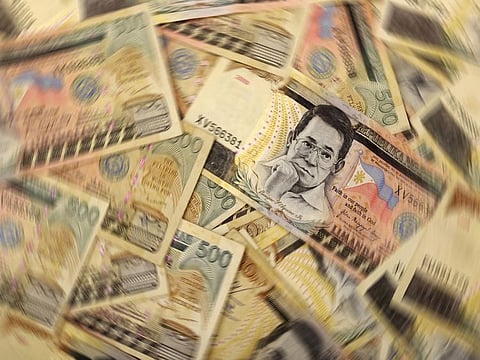How the Philippine peso became Asia's best-performing currency in 2020 amidst pandemic
Fall in imports, current account surplus, spike in demand for bonds behind peso's climb

DUBAI: Despite the virus-induced recession, the Philippines remains awash with cash, having reached record-levels of gross international reserves, which topped $98 billion in August 2020.
Until March 2020, when the corovirus started to cripple the global economy, the Philippine peso was the best-performing Southeast Asian currency. Initially, with the strict lockdowns imposed, it appeared that it's lost its immunity from the contagion.
From January 1, 2020 to September, the Philippine peso jumped 4.3% against the US dollar. By comparison, the Chinese yuan rose by 1.8% — while the Indian rupee slid 2.9% and the Indonesian rupiah dropped 6.3%.
On Friday (September 11, 2020), the Philippine peso further appreciated to 48.58 against the US dollar, according to a Trading Economics chart.
Several drivers are behind the currency move. First, there's the steep drop in imports due to the domestic economy's weakness. This has led to a current account surplus, as exports didn't drop as much. Second, bond issuances by Philippine-based entities have also spiked.
The result: the Philippine peso has become the best performer among Asian currencies so far this year.
Collapse in demand for imports
The Southeast Asian country saw one of the world’s longest and strictest lockdowns to curb the spread of COVID-19. The current account surplus came as a result of a steep fall in imports (lesser demand for US dollars).
Current account measures a country’s total transactions with the rest of the world, including imports and exports of goods, cross-border investments, as well as transfers such as foreign aid.
Philippine exports and imports plunged this year. The Philippine Statistics Authority (PSA) reported in August that merchandise exports shrank by 13.3% to $5.33 billion in June after a 26.9% yearly decline in May.
On the other hand, imports fell 24.5% to $6.63 billion in June, after taking a 40.6% plunge in May.
“The continued fall in imports translates into subdued demand for foreign currency and will likely lead to short term support for PHP,” Nicholas Mapa, senior economist for the Philippines at ING, told CNBC.
PHP is the abbreviation for the Philippine peso.
“The Philippine Peso continues to outperform regional peers as the country posts a current account surplus year-to-date in 2020, due mainly to the substantial drop-off in imports, and we can expect this trend to continue going into 4Q 2020,” he wrote in a note.
Demand for Philippine bonds
Besides the current account surplus, there's another development supporting the peso's strength: continued foreign buying of Philippine bonds, making it one of the key pillars of the currency's spike.
This 2020, Philippine-based borrowers have raised a record $11.4 billion dollars via international bond sales, according to a Bloomberg report. This has bumped up the country’s foreign currency reserves, helping shield the economy against external shocks.
Economists, however, say the swamp of foreign bond issuances may be drained in 2021. The reason: cheaper funding costs in the domestic market could keep borrowers from more foreign issuances.
Jonathan Ravelas, chief market strategist at BDO Unibank Inc told Bloomberg: “We’re not seeing that next year, and if imports rise as the domestic economy recovers, the peso could go back to 50 per dollar next year.”
Record-high forex reserves
Another factor in the peso's rise: The all-time high of $98.6 billion in foreign exchange reserves, also known as "gross international reserves".
The Philippine economy has posted its first recession in nearly 3 decades this year. In the first half of the year, the economy sank by 9 percent compared to 2019 as COVID-19 curbs affected businesses, resulting in millions of job losses. In Q2 alone, the country's GDP shrank by 16.5% on a year-on-year basis.
In August 2020, the Philippines' Bureau of Treasury announced a Php140.2-billion budget deficit for the month, nearly double the PHP75.3 billion shortfall in July 2019.
The wider gap was triggered by a 10% rise in public spending to PHP374.7 billion from a year ago, as a result of the second tranche of the "Social Amelioration Program" (SAP).
A cash aid worth between PHP5,000 ($100) to PHP8,000 ($164) had been distributed to 14.1 million poorest families — meant to offset the income losses of daily wage earners during the March to May lockdown.
However, the cost of government borrowing has also been falling, hitting record lows. Historical data show that the Philippines' 10-year government bond reached a maximum yield of 8.189% (on October 22, 2018) and a minimum yield of 2.581% (on August 17, 2020).
Also last month, government policy makers said they see the country's economy shrinking by 5.5% in 2020, possibly with a deeper slump, and if lockdowns return.
Sign up for the Daily Briefing
Get the latest news and updates straight to your inbox











